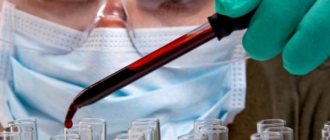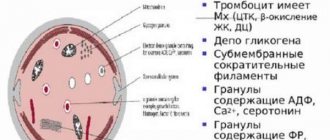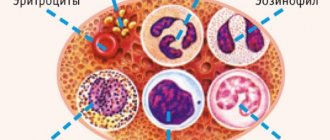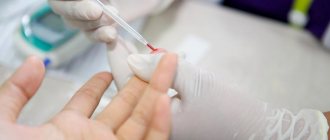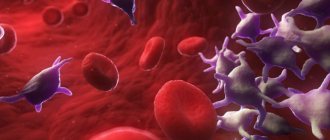The procedure for a donor to donate platelets for medical purposes is called thrombocytopheresis. You can donate them voluntarily by visiting a blood donation station or making an appointment by phone. The components obtained as a result of donation by a donor can help save a human life. They go to help people suffering from cancer or hematological diseases.
The components that protect the human body from possible injuries and bleeding are called platelets. When a vessel is damaged, a protective biological component is formed - a blood clot. It is necessary to create an obstacle to blood loss for victims. Plateletpheresis may be prescribed to reduce high levels of platelets in the blood. This procedure is prescribed to reduce the likelihood of blood clots. If necessary, the doctor prescribes a blood test for the patient. Medicines and blood substitutes are made from the platelet mass obtained as a result of donation by a donor.
How do donors donate platelets?
At the registration desk, the donor is offered a questionnaire to fill out. In it you need to indicate your passport details, address of actual residence, telephone number, past illnesses. A donor card is created for the newly arrived person. After this, the future donor will be given his card for donating blood from a finger. Based on the results of a blood test, hemoglobin levels, group, and platelet counts are determined. Next, with the results obtained, the donor undergoes examinations by a transfusiologist. They measure his weight, height, blood pressure, pulse, and inquire about the general well-being of the donor.
Once examined by a transfusiologist, the donor is allowed to donate platelets.
The procedure has two ways:
- intermittent;
- hardware;
How donors donate platelets: instructions
In the intermittent method, blood is taken from the donor and platelets are separated from it. This procedure uses a centrifuge. After the platelet collection procedure is completed, the donor’s blood is returned. The time it takes for the procedure depends on how quickly the required number of blood platelets is collected. This indicator is influenced by the total weight of the donor. This method is not widely used due to its complexity and duration.
In the second, special devices are used. They create a continuous flow of blood. This leads to the fact that a nurse or doctor can monitor the speed of donation and the well-being of the donor. Sterility is ensured due to the lack of contact during operation of the mechanism.
Having passed the necessary tests and received the doctor’s permission, the donor:
- Drinks hot, sweet tea with cookies, sometimes chocolate is available;
- On call, occupies an empty chair for donation;
Donation procedure:
- A completely sterile needle is inserted into the donor's vein by a nurse;
- The nurse enters the necessary parameters into the sampling machine. The device starts working in automatic mode;
- The donor clenches and unclenches his fist to create pressure and improve platelet collection;
Modern devices operate automatically. When donating, they use a sound signal to tell the donor when to release his fist and not work with it, and when to start squeezing and unclenching it. The procedure itself takes from forty-five minutes to an hour. After donating platelets, the donor is given a form to receive free social assistance.
Preparation for plateletpheresis
You can donate blood for platelets only if certain requirements are met.
A few days before the procedure, you should stop drinking alcohol, try to get more rest, avoid stressful situations and minimize the possibility of injury. Smoking is prohibited on the day of the procedure.
For two weeks before plateletpheresis, it is necessary to stop taking any medications, especially blood thinners.
Particular attention must be paid to the diet, which must be balanced and contain essential vitamins and microelements. Fried, hot, spicy foods, as well as dairy products and citrus fruits should be excluded. Fast food is especially harmful, as it has a negative effect on the liver. It is better to give preference to steamed products.
You should eat well before the procedure.
It is advisable on this day to include in the menu dishes containing complex carbohydrates: cereals, sweet buns, whole grain bread. On the day of donating platelets, you should get a good night's sleep and refrain from mental and physical work. The medical professional will first provide information on how to donate platelets correctly, as well as how to prepare for the procedure. Failure to comply with its requirements is fraught with impaired blood clotting, a decrease in platelet levels and, as a result, negative consequences for health.
The day before the procedure, the future donor must undergo a medical examination, which includes a general and biochemical blood test and other procedures.
The specialist’s confidence in the donor’s candidacy should be maximum. This is associated not only with the risk of complications for the recipient, but also with the high price of consumables and large time costs for medical personnel and the donor.
If poor test results are detected after plateletpheresis, the platelet mass must be disposed of due to its unsuitability.
Platelet donation
Platelet donation procedure
Persons who are citizens of the Russian Federation and other states with a residence permit and temporary registration are allowed to donate platelets. They must be registered on the territory of the Russian Federation for at least one year. Donors who regularly donate platelets or newcomers may be allowed to donate platelet mass. The latter, as a rule, will be thoroughly checked using tests (taking blood from a finger, providing a medical certificate from a therapist, infectious disease specialist, dermatologist, sometimes a heart cardiogram is required).
After the donor has donated platelets, he can be re-assigned for the next donation in two weeks or a month. The period after which he can come again is approved by the doctor. The doctor assesses the donor’s condition and his medical indicators.
Transfusion of one dose of platelets taken from a person in one procedure can help patients with leukemia, aplastic anemia, and during complex operations.
Platelet donor
The platelet donor must voluntarily agree to the procedure. Two days before donation, it is prohibited to take medications that thin the blood (aspirin, Trental, chimes). They can cause bleeding and hematoma during donation. It is also prohibited to use any types of drugs, alcohol, or nicotine before donation.
Contraindications for donation are:
- people with hepatitis of all categories;
- patients with tuberculosis;
- HIV infected, AIDS carriers;
- oncological diseases;
- addicted to drugs and tobacco;
- mental disorder;
- disorders of the cardiovascular system, heart;
- persons suffering from asthma;
- people with kidney disease, vision problems, hearing and speech impairments;
- persons who have undergone organ transplantation or organ removal;
- persons suffering from ulcers, diseases of the gastrointestinal tract;
It is temporarily prohibited to donate blood if:
- viral diseases;
- during the vaccination period;
- after tattooing, permanent makeup, body piercing;
- abortion, pregnancy, breastfeeding;
- after operation;
After the platelet donation procedure is completed, it is recommended not to give your body physical activity on this day, observe the intervals between donations, and adhere to a special diet to restore platelet levels or raise (if there is a low level) hemoglobin level.
The importance of plateletpheresis
Platelets are one of the components of blood that protects the body from bleeding. Damage to blood vessels causes the blood platelets to stick together with the subsequent formation of a blood clot, clogging the damage and preventing blood loss.
Anucleate bodies stimulate hemostasis, participate in the delivery of nutrients to the endothelium, and also promote tissue healing and restoration by releasing growth factors.
An increase in platelet count is required for patients suffering from platelet deficiency caused by:
- thrombocytopenia (low concentration of blood platelets in the blood);
- thrombosthenia (hereditary pathology, accompanied by dysfunction of platelets when their number is normal);
- DIC syndrome (impaired blood clotting);
- local bleeding (uterine, gastric, etc.);
- heavy blood loss during surgical interventions;
- frequent nosebleeds or blood discharge from mucous membranes.
Thrombocytopheresis is also prescribed when there is an increased content of platelets in the blood in order to reduce their concentration and reduce the risk of blood clots.
The level of platelets can be determined using a general blood test prescribed by the attending physician in the presence of certain symptoms (increased bleeding, the appearance of hemorrhages on the body for no reason, etc.). In some cases, donating venous blood is advisable. The procedure is safe and is performed in most clinics.
Platelet mass is also necessary for the manufacture of blood substitutes and some medicines.
Platelet donation: benefits and harms
Thrombocytopheresis
One of the factors in the development of cardiovascular diseases is that the blood is viscous. In this case, strong friction occurs against the blood vessels, blood circulation and hemodynamics become worse. All this increases the occurrence of blood clots in the vessels. Blood clots that block blood vessels can lead to cardiac arrest. To avoid these consequences, it is recommended to donate blood at least once every six months.
The platelet donation procedure is absolutely safe. Restoration of the cellular composition of human blood occurs in fourteen days, all consumables are completely disposable. There are many more positive properties from renting.
These include:
- Moral satisfaction, improved mood;
- Activation of the functioning of all internal organs;
- Improving the immune system;
- Reducing the risk of oncology, the risk of cardiovascular diseases;
- The realization that by donating platelets, you are saving someone’s life, you are helping people;
- Receiving social support measures (compensation for food in cash equivalent);
- The opportunity, when donating 40 times (or more) blood and its components free of charge (except for donating blood plasma), or 25 times (or more) blood and its components + 40 times blood plasma or 60 times or more blood plasma, to receive the title of honorary donor of Russia. This title provides social benefits in public transport, when visiting the dentist, and when paying for utilities;
Platelet donor: consequences
Negative consequences appear to a lesser extent when donating platelets than when donating blood. In some cases, the donor may feel weak, drowsy, and tired in his body. This condition is caused by the fact that the composition of his blood changes. This feeling goes away after a few days. After the procedure, possible damage to the body should be avoided, because the ability of blood to clot is reduced. It is almost impossible to become infected during the donation procedure, provided, however, that it is carried out only in a special medical institution.
If platelet donations are too frequent, the condition of the blood and bone marrow may worsen. Sodium citrate is used to improve donation. It slows down blood clotting. Over time, the body may become less able to tolerate citrate entering the bloodstream. This substance removes calcium from the body and can provoke pain during donation, as well as after it (weakness throughout the body, a state of nausea, dizziness, chills). When accumulated in large quantities of this substance, individual intolerance may occur.
However, it's not all bad. Such a reaction can occur only after several years, and not after two donation procedures. To restore the donor's calcium level, calcium gluconate is infused several times during donation. After completion of the procedure, the doctor may advise the donor to take vitamins with calcium (Calcium D3 Nycomed, Calcium Vitrus).
The nuances of donating blood for platelets, what are the dangers of thrombocytopheresis?
When a person sees a doctor, not all recommendations, terms and concepts are clear to the patient. Since only the person himself has the right to decide whether to agree to the procedure or refuse it, it is necessary to understand how it works. What is thrombocytopheresis? What are the pros and cons of the procedure? How often to donate blood?
The value of platelet mass
Human blood is a unique substance. Consists of three fractions and plasma:
- red blood cells;
- leukocytes;
- platelets.
Each part of the blood performs important functions and is important for normal human life. Donating platelets for analysis allows you to evaluate your blood's ability to clot. It is recommended to donate blood for platelets to every person who has consulted a doctor with a complaint of bleeding.
Attention! Platelet cells, being “free floating” in the blood, do not perform any functions. Their activity begins at the moment when there is damage in the wall of a vessel or capillary.
Having detected a vessel injury, the platelet rushes towards it. The cell attaches to the wall of the damaged capillary. Then the number of cells in the damaged area increases, which forms a loose thrombus that reliably closes the lumen in the vessel formed after the injury. Subsequently, other blood cells are activated, for example: fibrin. It attaches on top of the platelet cells, strengthening the resulting barrier.
What is thrombocytopheresis
Donation is a noble act. In addition, doctors insist that platelet transfusions bring many benefits. How to treat donation is up to everyone to decide for themselves. However, incomplete awareness of what plateletpheresis is, how it is performed, and what the consequences are for the platelet donor and the recipient leads to uncomfortable situations and misunderstandings.
Donating blood without dividing into fractions and the nuances of thrombocytopheresis are different. Most people do not see the difference between the procedures. Whole blood donation involves the following procedure:
- the area close to the veins is treated with an antiseptic;
- a special catheter is inserted;
- blood is drawn;
- the procedure takes 15-20 minutes.
With thrombocytopheresis, the process is somewhat different. Before submitting the material, it is important to understand how harmful it is to the body.
Rules for platelet donor
It is noteworthy that not everyone who wants to become a donor is suitable for collecting platelets. In addition to serious health contraindications and other dangers, there are conditions that are mandatory for each prospective donor.
The donated platelet mass can be used for various purposes. Sometimes it is used to produce numerous fractions, the introduction of which can actually help save a person’s life. Others use the donor compound for transfusion into another patient, and often do not consider the harmful effects that such a procedure may have.
What should a person who decides to donate platelets take into account? Here are some rules.
- At least two weeks before the expected date of blood sampling, stop taking medications that have a thinning effect on the blood.
- Stop taking medications.
- Adjust your diet and eat healthy for several weeks, giving up fast food, fried, spicy and dairy foods.
- On the day you need to donate blood, the donor should have a hearty breakfast of foods rich in complex carbohydrates.
- For several days before visiting the hospital, avoid heavy physical activity and avoid stress.
Performing plateletpheresis is a procedure that puts the body in a state of stress. Therefore, on the day of platelet collection, it is important to maintain a calm pace of life, not perform physical activity, and limit mental activity. It's better to have a good rest.
Platelet donation is not just a collection of donor blood. If the procedure is carried out as usual, in a total volume, for example: in the standard 500 ml, the total number of platelets will be too small to be used for other purposes. Taking a larger volume of blood is unacceptable, as it can lead to a tragic condition for the donor.
How is thrombocytopheresis performed?
Performing plateletpheresis takes much longer than classic donor blood collection. The duration of such a procedure can reach several hours. It uses special equipment that is capable of separating blood into fractions and isolating the necessary components from it.
This is what the apparatus for the procedure looks like
The donor's blood is pumped through a device capable of separation. Through special compartments, platelets are separated from the blood mass, and the rest of the mass is returned.
Platelet collection is carried out while lying down or sitting in a chair. The donor should be as comfortable as possible. The arm from whose vein the mass will be taken is secured.
A thin plastic tube with a needle at the end is connected to the circulatory system. The outflow of blood into the cavity of the device begins through the vein. The same needle is inserted into a vein in the other arm, through which the patient’s filtered blood is injected.
The blood, having entered the apparatus for filtering the mass, enters a centrifuge, where, under the influence of centrifugal force, it is divided into fractions. The platelets are separated and placed in sealed plastic bags.
Important! To prevent the donor from bleeding, tight bandages are applied to the blood collection sites. He is given sweet tea and chocolate. In a few minutes he can go home.
Important nuances
The resulting platelet mass has a brownish-yellowish tint. Like all natural ingredients, it quickly deteriorates even with proper storage. In special chambers the shelf life of the fraction is 5 days.
It is also important how the platelet mass is stored. These blood components tend to settle. Therefore, in order for the mass to maintain its formula, it is necessary to constantly mix the bags with biomaterial. Otherwise, the introduction of such a mass, in addition to other dangers that dressing up with blood entails, can lead to the death of the recipient.
Although the level of platelet cells will be restored in the donor's blood within a few days, the body feels negatively due to the manipulation. A device for separating blood into fractions circulates the entire volume of blood more than once. In this way, almost all of the platelet mass is released from the donor’s blood.
After the procedure, proper rest is important.
The dangers of plateletpheresis
Although many doctors claim that the donor’s body does not suffer from thrombocytopheresis, there is no reason to completely trust this. The human body constantly needs protection. This is also true for the functions performed by platelets.
If you do not take into account the processes that occur inside the body at the time of blood sampling, after the procedure the donor may experience severe fatigue, drowsiness and weakness. Within a few days, the following situations may pose a danger:
- cuts;
- bruises;
- any injuries.
The donor's stamina decreases. On the day of blood sampling, you should not engage in active activities or mental work.
Contraindications
There are a number of contraindications to thrombocytopheresis:
- weight less than 50 kg;
- minority;
- chronic pathologies;
- development of allergic reactions and predisposition to them;
- viral and infectious diseases.
The same person cannot be a donor more than 2-3 times during the year. At least 4 months must pass between each platelet collection.
Important! Frequent procedures can lead to serious diseases of the donor's bone marrow.
For some diseases, platelet collection is strictly prohibited:
- tuberculosis;
- immunodeficiency virus;
- cancer pathologies;
- hepatitis;
- disturbances in the functioning of the heart and blood vessels;
- after surgical interventions;
- pregnancy;
- alcoholism;
- recent vaccination;
- stomach or duodenal ulcer;
- tattoos;
- extensive dental lesions.
It is up to everyone to decide whether to perform thrombocytopheresis or not. Someone is proud of themselves if they participate in the procedure. For others, respect for life prevents them from using another person's blood in this way.
It is always important to remember that there are many infections that can be transmitted through blood. Even fully screened donors are not a safe source for blood collection. Modern medicine offers many alternatives to blood transfusions that are safer and less costly to save lives.
More information about what systems exist for performing plateletpheresis and how the procedure is performed can be found in the video:
If a person conducts personal, detailed research with the help of authoritative literature before agreeing to or refusing plateletpheresis, he can protect his life and preserve his health.
lechiserdce.ru
How much do platelet donors get paid?
Since the adoption of the law at the federal level, which abolished paid donation, in Moscow, about forty percent of donors did not come to donate blood. To avoid this, the mayor of Moscow, Sergei Sobyanin, took a number of measures aimed at developing free donation, but with measures aimed at social support for donors who came to the blood transfusion station.
Donors who donate biological components to children do so free of charge. There is a program to develop the provision of donor services to the population free of charge. Cases in which donation is carried out on a paid basis are indicated in the documentation of the Ministry of Health of the Russian Federation. Donors who donate must receive meals. However, as a rule, instead of food, they receive money in their hands. Compensation for food provided to a donor is not considered payment for the provision of platelets. In Moscow, for example, payment for donating platelets by a donor is approximately 7,750 rubles.
Similar articles on the topic of transplantation
- Blood plasma donation: procedure, benefits and harms
- Donation of red blood cells
- Article 186. Guarantees and compensation to employees in...
- Diet and nutrition of the donor before donating blood
- Law “On donation of blood and its components” N 125
- How much do they pay for donating blood and plasma?


